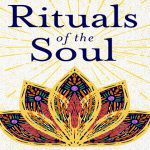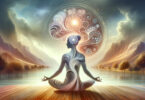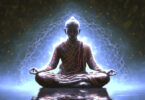 December 21st, 2021
December 21st, 2021
By Kori Hahn
Guest Writer for Wake Up World
Feelings are not science based; they are phenomena happening within your body. Feelings are like rainbows: you might not be able to touch them, and they change as you move and grow, but they most certainly exist.
It took me nearly ten years to truly understand this fifth stage of yoga. Most of my yoga life, I was dedicated to a strict daily Mysore-style Ashtanga yoga practice — you know, the kind where you put your leg behind your head, contortionist style?
On most days, I did the same exact movement routine. I would also spend a little time meditating; I believed that if I did these two things enough, I would find the contentment, peace, and happiness I so desperately yearned for. Ironically, I was so inflexible with my daily yoga routine that I was actually building tension and resistance within my body rather than eliminating them. Clearly, this was not my path to contentment, even though my mind constantly told me it was.
Most of those years, I rarely stopped to listen for how I felt. Looking back on it, I see that so many clear intuitive messages were coming through, but I mostly ignored them. I had a plan, or so I thought. I kept all of those gut instincts and heartfelt dreams hidden away under my thick blanket of routine and predictability in order to stay comfortable and secure in what I knew.
I never saw the big picture of yoga. I didn’t really understand how yoga worked as a comprehensive system. I studied with a lot of teachers, did countless trainings and courses, and read plenty of books, but I never clearly recognized yoga as a strategy — a system, if you will.
Now, I see it that way. And I realize that this step of the yoga process is the bridge, guiding us from the more outward aspects of yoga — the physical body and the mind —into our spiritual center, our inner world, our soul. We accomplish this by feeling.
The ancient yogis offered us pratyahara for learning to feel. This deep, meditative examination of one’s inner self is exactly how the earliest sailors, astrologists, cosmologists, physicians, psychologists, and spiritual healers gained their knowledge. Much like our modern X-ray machines, pratyahara practices are techniques for seeing into the body in order to understand it.
This is how the first Portuguese explorers set sail for what was to them a new world despite being told the Earth was flat. This is how the yogis themselves came up with the system I am sharing with you here today. It is also how I came to write the book you are reading.
Our human bodies are dynamic and intricate. There is a depth to us that can be difficult to connect to without a conscious intention to do so. In the same way most choose to stay on the shorelines of the oceans, many people choose to stay on the surface of themselves, never taking the time to look deeply within and quite possibly never in their entire lives connecting with the meaning of life.
As Carl Jung explained, “I have found from experience that the basic psychological functions…prove to be thinking, feeling, sensations, and intuition.” There are differences among these layers of psychological functioning. Now you know how to identify all of these within yourself. Only by familiarizing yourself well with each of them, slowly over time, will you gain the keen awareness to notice just how different these styles of inner communication are and where they are stemming from. This is important, because when it comes to living a life of soulful purpose, you want to be sure you’re making decisions and choices, not from thoughts, feelings, or sensations, but from your intuition.
Connecting with Your Superpowers
Essentially, the yogis teach us to become experts at ourselves. They want us to see ourselves for what we are. They begin with the obvious, the physical body and the breath, and then dive into the less visible and more felt mechanisms of our inner self. Once we begin to feel within, we discover layers of our existence still to be unpacked. You may feel emotional waves, body sensations, or energetic thicknesses in certain areas, as well as a felt sense of direction or clarity that lacks reasoning or logic.
In Alaska, I have a friend who lost his eyesight in an unfortunate run-in with a protective mama bear a few years back. Although he can no longer see, his other senses have become more powerful and acute since that day. Specifically, he has become an incredible listener. He can recognize my voice in a crowded room even if we haven’t been together for years. It’s absolutely mind-boggling. He has also become a remarkable musician in the time since he lost his eyesight.
As his example shows, by disconnecting from certain senses, your others become stronger. Furthermore, by closing yourself off to your physical senses — sight, smell, taste, hearing, and touch — your sixth sense, inner feeling, naturally grows stronger. The technique the yogis gave us for doing this is pratyahara, which literally means “gaining mastery over ahara, or external influences.” This is precisely what we are working on here.
Pratyahara is a tool for connecting you to the intuitive parts of yourself so that you can know what they are communicating to you. Essentially, the more you learn to withdraw your mindfulness from the senses on the surface and allow your concentrated gaze to move within, the more you advance your skills of feeling into your inner self.
Albert Einstein claimed that most of his craziest ideas came to him intuitively, specifically when playing his beloved violin. In a letter to the great pioneer of musical education Shinichi Suzuki, Einstein shared with him that “the theory of relativity occurred to me by intuition.” It was only after his intuition suggested something inside him that he would tirelessly work to prove these subconscious hunches to the scientific community in thoughts, logic, and words. In addition to realizing the groundbreaking theory of relativity, Einstein also introduced a new way to look at science when he said, “All great achievements of science must start from intuitive knowledge.”
In my opinion, it is through this stage of moving within that yogis learn to perform miracles using their supernatural powers, which are called siddhis. Perhaps we could even say Einstein himself became so intuitive he created his own scholarly style of siddhi power.
Siddhi is a Sanskrit noun that can be translated as “perfection,” “accomplishment,” “attainment,” “success,” or “power.” Siddhis arise when you are so aware and focused on what is happening within you, especially your intuition, that you gain incredible abilities and strength. This ability to focus intensely within is exactly how people like Wim Hof, “the Iceman,” continue to break world records, over and over. They too have developed their own siddhi superpowers. Still to this day the highest ordained Tibetan monks use pratyahara and their own siddhis to find and appoint the next Dalai Lamas.
Another example of a dedicated pratyahara practitioner is the Vietnamese monk Thich Quang Duc. On June 11, 1963, as a form of political protest, Thich sat peacefully in Lotus Pose on a street corner in Saigon, Vietnam, as his entire body was engulfed in flames. Thich was completely in control of his mind. As his body burned to ashes, he sat there unmoving, never once opening his eyes, flinching in pain, or making a sound.
Siddhis do not appear in everyone. In fact, the yogis warned that these superpowers can actually be a distraction along one’s spiritual path. I hope you don’t see gaining siddhi superpowers as your goal but as an inspiration. When you fully familiarize yourself with your inner anatomy to the point of being intuitive, you will see that you already embody this sort of limitlessness — that you can do what once seemed impossible to your thinking mind. You start to understand the answer to the question “Who am I?”
Excerpted from the book from Rituals of the Soul. Copyright ©2021 by Kori Hahn. Printed with permission from New World Library — www.newworldlibrary.com.
About the author:
 Kori Hahn is the author of Rituals of the Soul and founder of a community gathering place called the Santosha Society, which is dedicated to travel, surfing, and the soulful. She hosts numerous trips around the world for hundreds of women who study Ayurveda, yoga, meditation, and all things related to soul growth, knowledge, and fulfillment. Visit her online at http://www.SantoshaSociety.com.
Kori Hahn is the author of Rituals of the Soul and founder of a community gathering place called the Santosha Society, which is dedicated to travel, surfing, and the soulful. She hosts numerous trips around the world for hundreds of women who study Ayurveda, yoga, meditation, and all things related to soul growth, knowledge, and fulfillment. Visit her online at http://www.SantoshaSociety.com.

If you've ever found value in our articles, we'd greatly appreciate your support by purchasing Mindful Meditation Techniques for Kids - A Practical Guide for Adults to Empower Kids with the Gift of Inner Peace and Resilience for Life.
In the spirit of mindfulness, we encourage you to choose the paperback version. Delve into its pages away from screen glare and notifications, allowing yourself to fully immerse in the transformative practices within. The physical book enriches the learning process and serves as a tangible commitment to mindfulness, easily shared among family and friends.
Over the past few years, Wake Up World has faced significant online censorship, impacting our financial ability to stay online. Instead of soliciting donations, we're exploring win-win solutions with our readers to remain financially viable. Moving into book publishing, we hope to secure ongoing funds to continue our mission. With over 8,500 articles published in the past 13 years, we are committed to keeping our content free and accessible to everyone, without resorting to a paywall.






